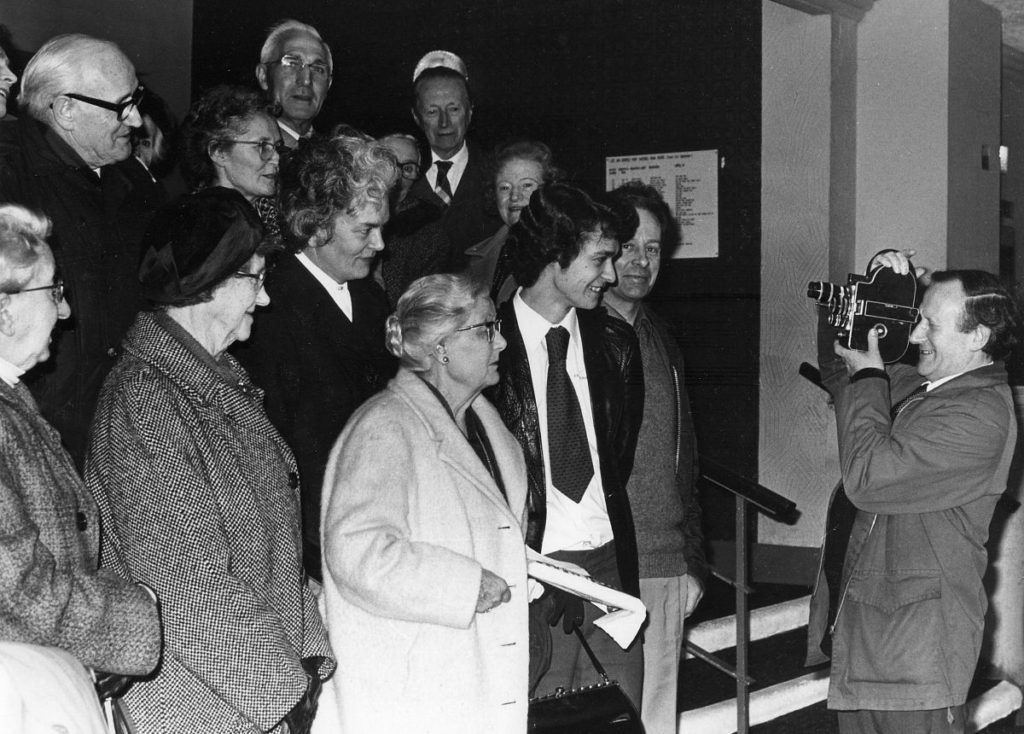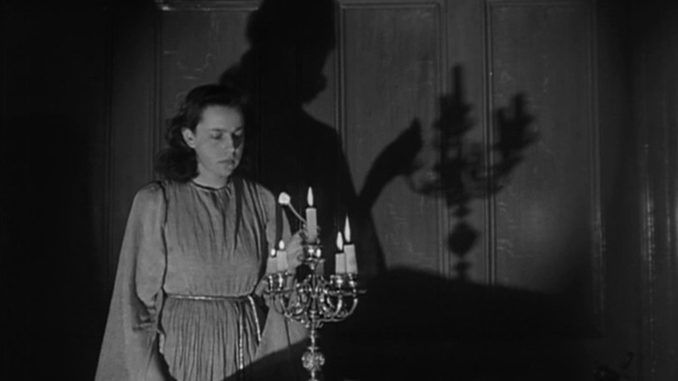
Rating: C+
Dir: Ivan Barnett
Star: Gwen Watford, Kaye Tendeter, Irving Steen, Vernon Charles
Hastings is not exactly Hollywood. Located on the South Coast, about an hour from London, the town of less than a hundred thousand inhabitants is most famous for giving its name to a pivotal battle in English history – 1066 and all that, where William the Conqueror defeated Harold II nearby. As far as global renown goes, it has largely been downhill for Hastings over the millennium since. However, for a brief period around the beginning of the fifties, this seaside town in East Sussex was the British horror film industry. To be fair, this wasn’t hard. The IMDb lists just nine films worldwide classified as horror for 1950, with Fall the sole horror film made in the English-language that year. It was not a genre in vogue, to put it mildly.
El Hombre sin Rostro, the only other with more than 60 votes on the IMDb, does sound kinda interesting. The title translates as The Man Without a Face, and a Reddit review describes it as “a Mexican take on Jack the Ripper containing an engaging mystery, Hitchcockian elements, and nightmare sequences involving a striking villain.” [It’s also supposedly the title under which Darkman was released in Argentina!] But it appears unavailable with subtitles, so here we are. I’ll admit, I was initially disappointed, but the more I dug into the making of The Fall of the House of Usher, the more I realized there was a fascinating tale to be told – maybe even surpassing the one in the actual movie.
While this is (to some extent) a Poe adaptation, it’s not connected to the later cycle of Roger Corman and Vincent Price. Those included their own well-respected take on the same original work, House of Usher. There had been adaptations of the story before too, though this was the first sound feature. Most notably, 1928 saw a silent French version, La chute de la maison Usher, which can be found on YouTube. This was based on a script co-written by Luis Buñuel with its director, Jean Epstein, and created the year before Buñuel made Un Chien Andalou. The style is not dissimilar, though there are no eyeballs being sliced up there; it still merited a spot in Roger Ebert’s book The Great Movies II.
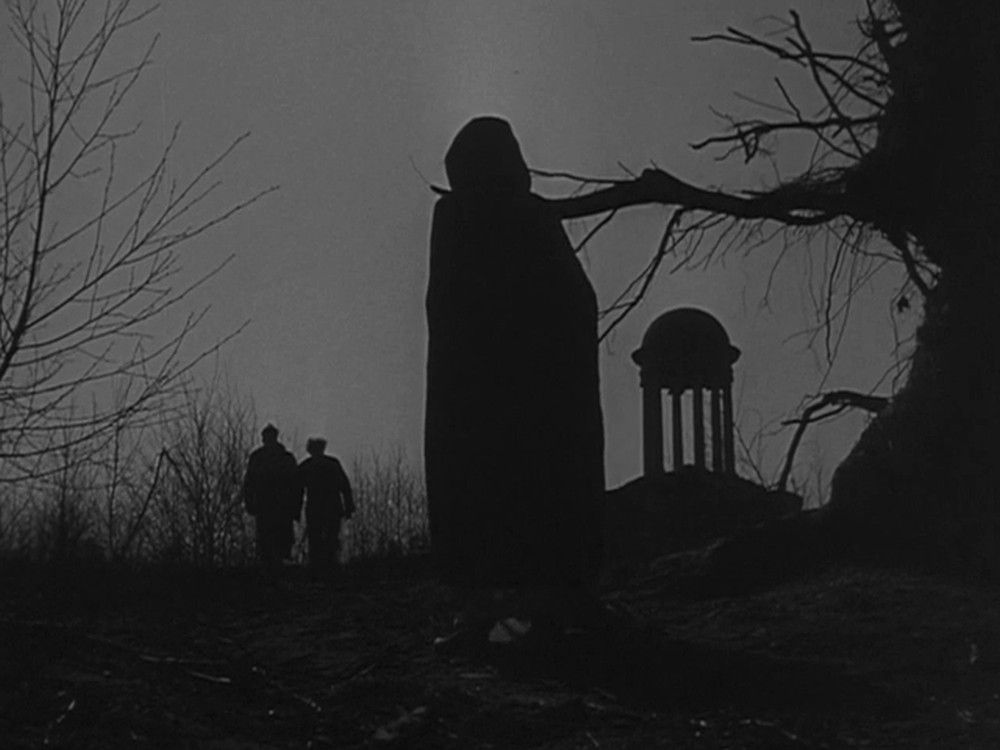 This version began as a 35-minute short, made in 1947 when Barnett was only 22 years old. Casting was largely from a local theatrical troupe, the Hastings Court Players, and one of them, Vernon Charles, also provided the location of the Netherwood Guest House, where much of the interior filming took place. [Many sources say it was Fairlight Hall, but that appears incorrect] The estate was largely demolished in the seventies to make way for housing, but among the guests at the time was notorious occultist Aleister Crowley, just before his death in December 1947. Barnett was largely unaware of the man’s reputation, and found him pleasant and amiable. Crowley watched some of the filming, and one of his artworks can be seen hanging on the wall in a scene.
This version began as a 35-minute short, made in 1947 when Barnett was only 22 years old. Casting was largely from a local theatrical troupe, the Hastings Court Players, and one of them, Vernon Charles, also provided the location of the Netherwood Guest House, where much of the interior filming took place. [Many sources say it was Fairlight Hall, but that appears incorrect] The estate was largely demolished in the seventies to make way for housing, but among the guests at the time was notorious occultist Aleister Crowley, just before his death in December 1947. Barnett was largely unaware of the man’s reputation, and found him pleasant and amiable. Crowley watched some of the filming, and one of his artworks can be seen hanging on the wall in a scene.
The director’s son, Adrian, now a photographer himself, says “Dad took the film to London to show it to film producer George Minter, who had among his credits, the notorious film, No Orchids For Miss Blandish. Minter asked my father, “Do you want to make money with this film, laddie?” And he advised adding all the other bits of scary stuff to make it a full length film.” Barnett returned to Hastings and got to work shooting the necessary extra footage around the area. Locations used included Ashburnham Place; The Queen’s Hotel on the seafront, which became the gentleman’s club, Beauport Park; and Barnett’s studios, at the Croft Chapel in Hastings Old Town.
Two years later, it was released, one of the last films given an “H” (for horror) certificate before its abolition. It proved a big enough hit, Barnett could afford to pay off his parents’ mortgage. Adrian remembers, “My father had photographs of queues in Tottenham Court Road, where it was the main feature, and the supporting film was Boris Karloff’s The Dark Eyes of London“. Despite its success, for most of the cast, it was their only significant work. The exception is Watford, making her screen debut here, although her stage performances had already impressed Sir John Gielgud. She would go on to a long career on stage, screen, radio and television, including both horror entries such as Taste the Blood of Dracula, and elsewhere – she was Calpurnia in the 1963 blockbuster/flop, Cleopatra.
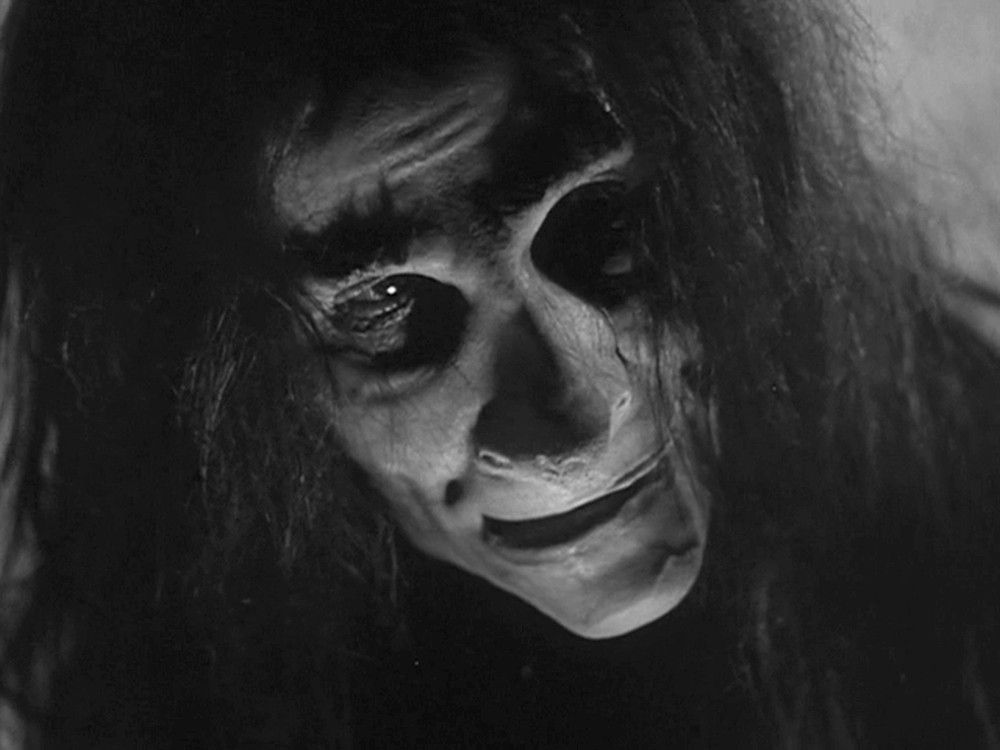
It begins with a wrap-around segment at a club. This leads to one member plucking a volume of Poe off the shelves, and reading the story to his friends. Although a lot of what follows is certainly not in the original – of necessity, since Poe’s short story is barely seven thousand words in length. The basic framework is there. Jonathan (Steen) visits his old friend, Roderick Usher (Tendeter), who lives with his twin sister, Madeleine (Watford) in the family mansion. However, both are behaving a bit strangely. Roderick is informed of a longstanding curse by family physician Dr. Cordwell (Charles). His father caught his wife having an affair, and decapitated the lover. Though not before the victim pronounced that the Usher children would die young, ending the family line.
The trauma drove Mom mad, but she’s still around (above), living in a temple with a secret tunnel connecting it to the house. Attempts to end the curse by destroying the severed head – which Mom is keeping in the temple – do not go well. Meanwhile, Madeleine is slowly wasting away, when not flitting through the corridors of the stately manor by candlelight. She eventually dies, and is entombed by her grieving brother. However, is she truly dead? Is the curse real? Was Madeleine being poisoned? These, and other, questions will not be answered. At the end, after the mansion burns down (in what looks like World War 2 stock footage) we go back to the club, and the story reader cheerfully confesses he doesn’t know what happened either. “Your guess is as good as mine,” he says. That’s Edgar Allen Poe for you, apparently.
To be honest, some of the acting here is not very good. I suspect the players’ theatrical background hampers more than it helps, with performances apparently aimed at the back of the dress circle, even in close-up. However, what saves things is the impressive photography. Barnett has a real eye for framing and, if some of the day-for-night work is short of perfect, the film is always beautiful to watch, when the cast falter. The screenshots here don’t truly do it justice, and I feel it would have fitted in well with some of the Italian classics to come in the sixties, such as Mario Bava’s work. Pronouncing this the best British horror movie of 1950 is a foregone conclusion, given the lack of competition. However, calling it the best-looking is an honour it fully deserves.
It’s a shame more of Barnett’s work hasn’t survived, since I would be curious to see if other films are as well-shot. The IMDb lists only one other feature, Robbery With Violence, and a couple of shorts. One of them, Courtin’ Trouble, is on YouTube, but in such low quality it’s hard to tell. However, Barnett made a number of which the IMDb has no record. Fall was the only horror film – a particular pity, given the eye he demonstrated for atmospheric imagery. But other movies by him include Stormswept and Nightwatch, drama documentaries about the work of Trinity House, the authority in charge of lighthouses for England and Wales. He also won a British Film Academy award – the precursor to the BAFTAs – for his cinematography on a short film about the atom.
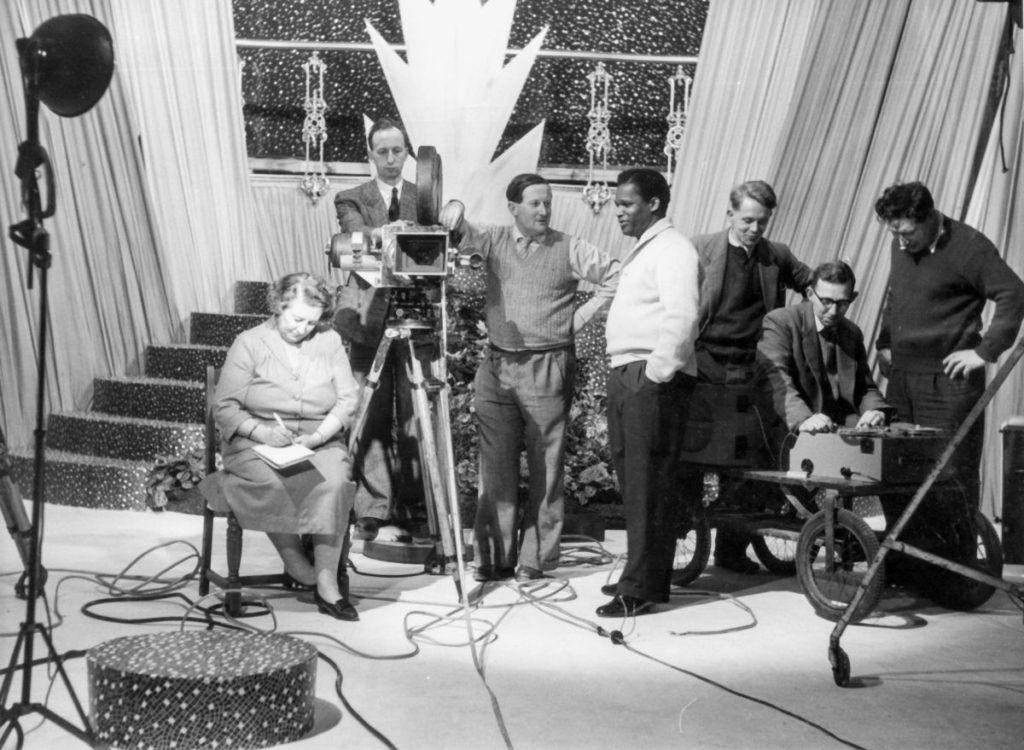
He was unable to serve in the armed forces due to asthma. So while still a teenager, Ivan instead became an apprentice lighting cameraman, working for the famed Gainsborough Pictures. He did a lot of work at their studios, and on various documentaries – Barnett was at Pinewood when Michael Powell and Emeric Pressburger were filming Black Narcissus. He completed his apprenticeship in under four years, considered quick at the time. It gave Ivan a solid foundation, both in cinematography, as well as being his own gaffer. Adrian recalls, “He always explained to me about an image being nothing without correct lighting, and even as a youngster myself, I was taught how to set the lights up correctly in his studio.” He adds that the style of photography Barnett had on Fall was a product of his training: “Film was expensive, and so they didn’t let you loose until everyone was satisfied that you were fully competent. Something I feel is sadly lacking these days.”
In the end, movie-making had to take a back seat for Ivan. He got married and had a family, so the risky business of cinema was replaced by more reliable work. Barnett filmed local news stories for both the BBC and ITV, and had a shop on Hastings seafront. There, he sold cameras and developed photographs for tourists, while doing wedding photography and other commissions. But his legacy lives on in son Adrian, although he has concentrated on still imagery. “I think I grew up seeing him do more photography, and less of the filmmaking as that was before he married… I do believe that my photography style is very cinematic in approach, and I tend to create my photography with emphasis on composition and lighting. Certainly, I tend to light big scenes as if it were a film set – although the end result is still images, the approach is very ‘filmic'”
By the end of the decade, British horror would once again become a force to be reckoned with in cinemas, thanks mostly to the success of Hammer Films. But for a period at the start of the decade, it was the exclusive territory of G.I.B. Studios, working out of a seaside holiday resort. I feel there’s something both glorious and intrinsically English about that.
This article is part of our October 2025 feature, 31 Days of Vintage Horror. Thanks to Adrian for his help – check out his photography through his website.
